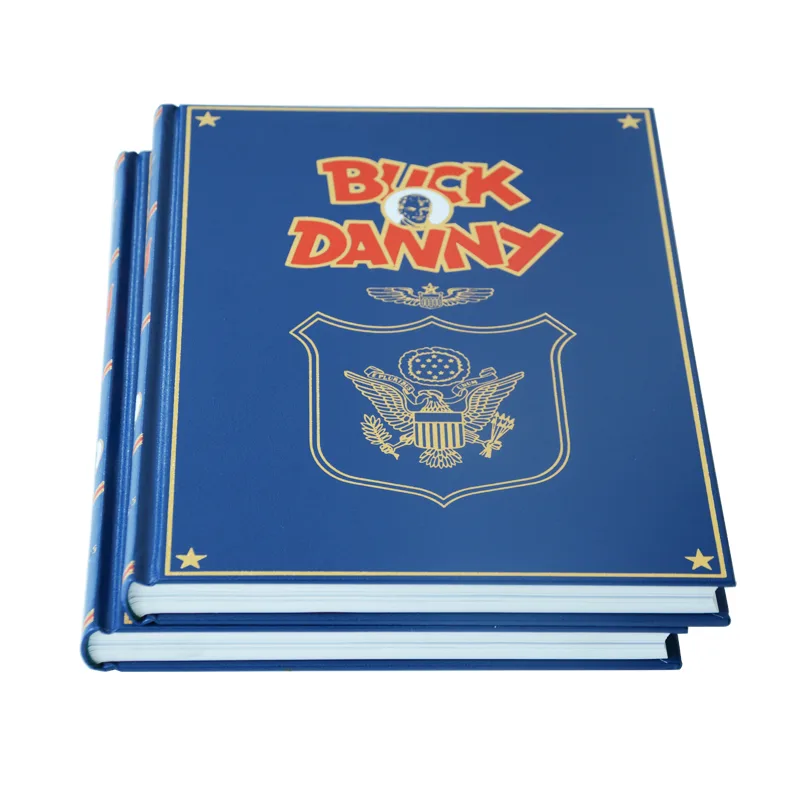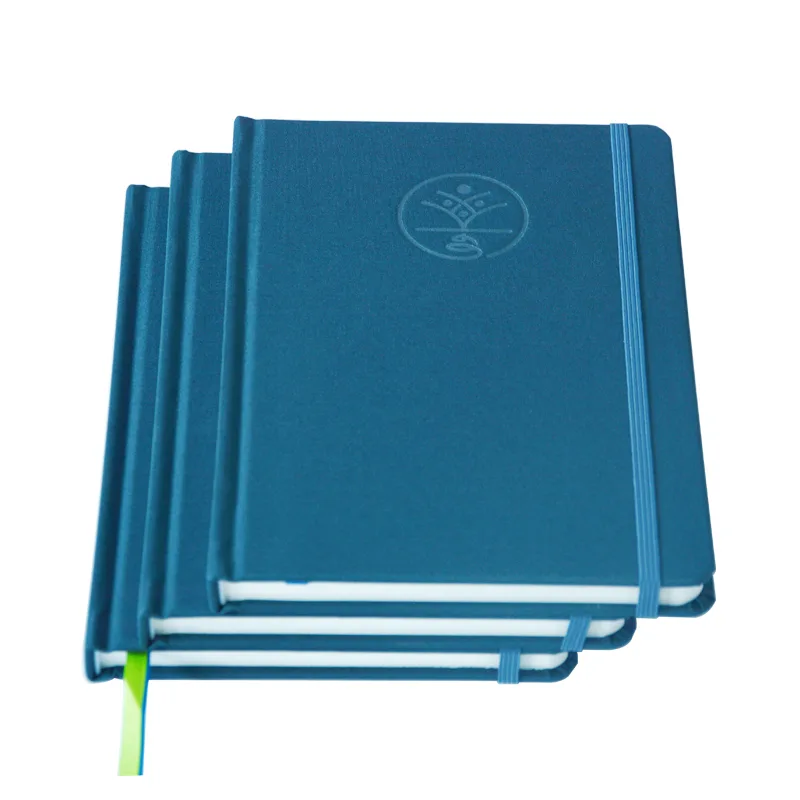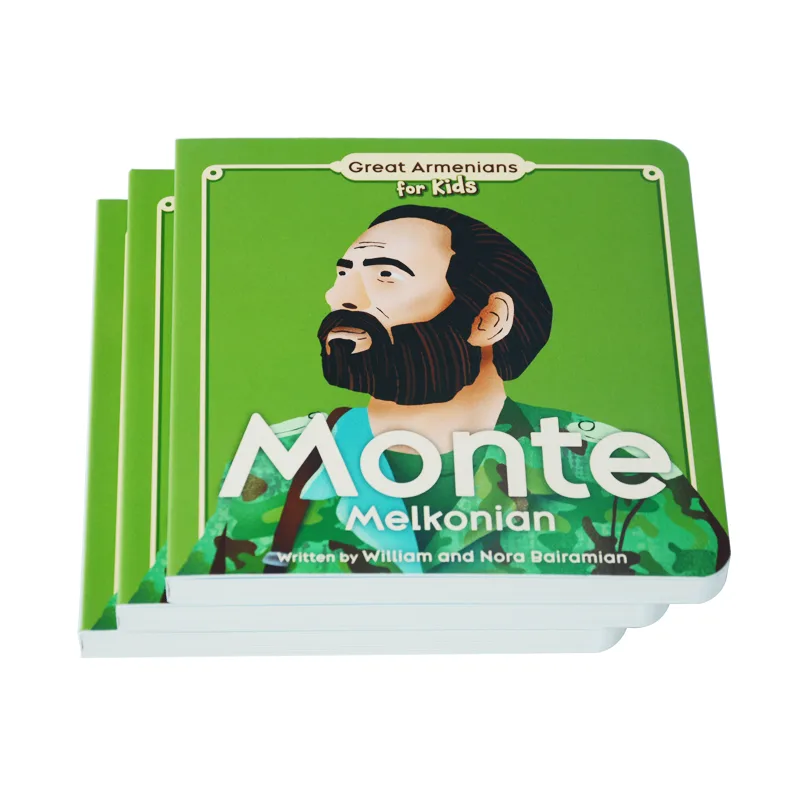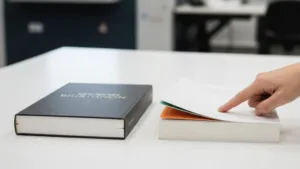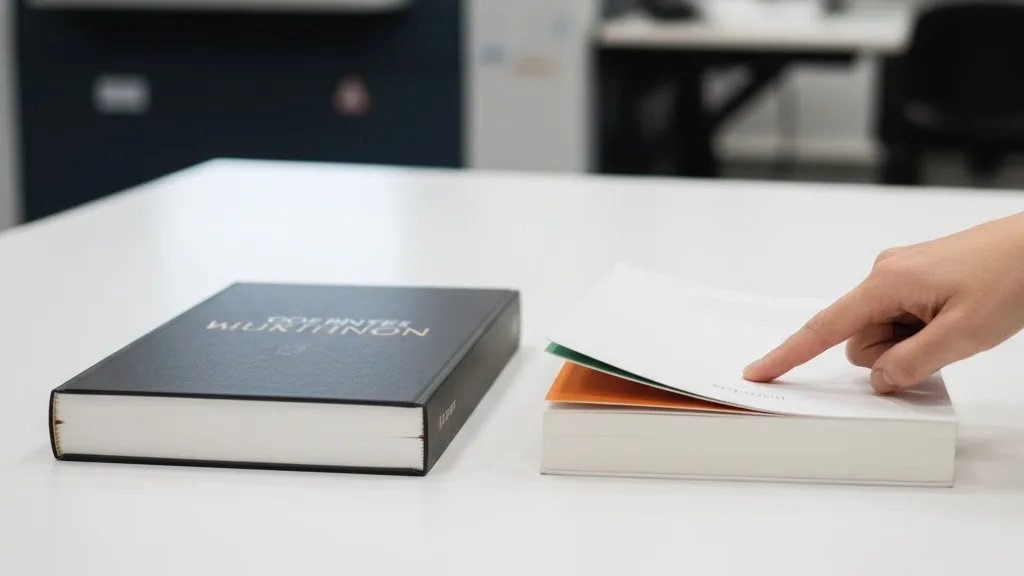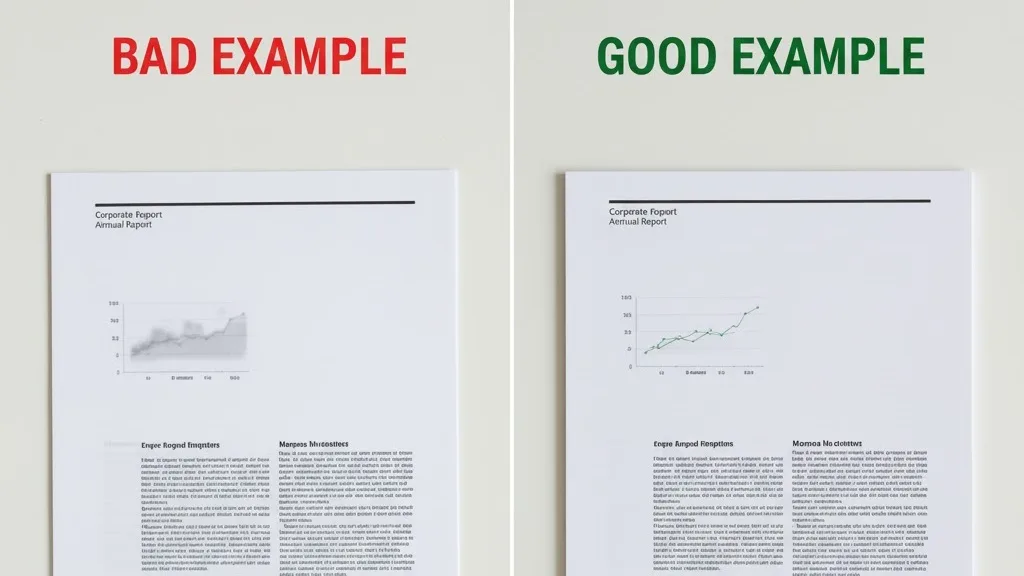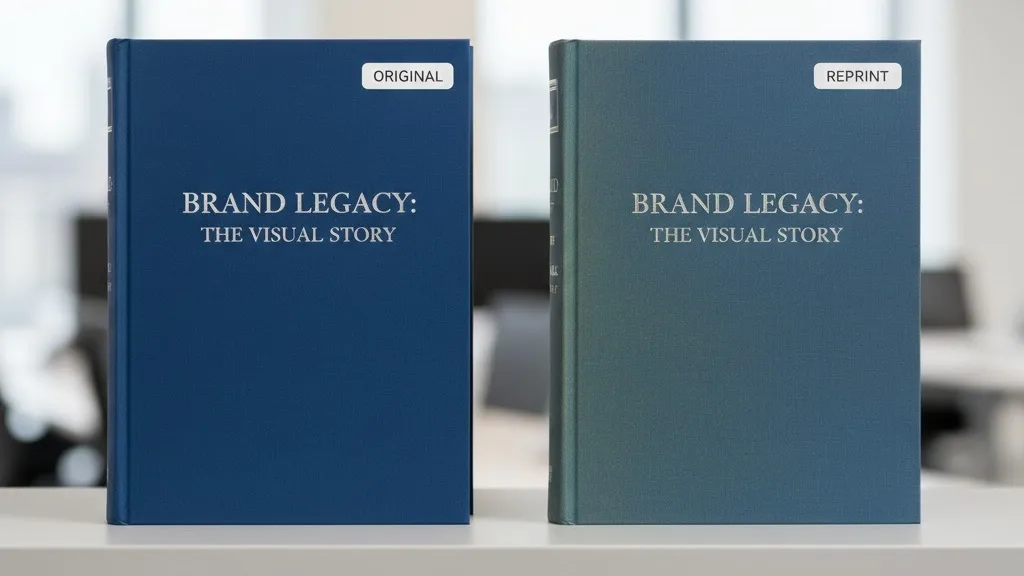Stop guessing which printing proofing method will make or break your book launch! This battle-tested guide empowers indie authors and small presses to confidently choose the right proof, ensuring your masterpiece prints perfectly the first time, saving you cash and headaches. You’re about to unlock the secrets to flawless book production.
Choosing the most suitable printing proofing method means matching proof types to your book’s specific needs like color accuracy, content verification, and budget.
1)Digital proofs (PDFs/basic prints) are for early content/layout checks and are cost-effective.
2)Blueline proofs confirm print structure and pagination before final printing.
3)Contract proofs are vital for color-critical work, especially covers and art books, providing a reliable color standard.
4)Press checks offer ultimate fidelity for high-stakes or high-volume print runs, allowing on-press adjustments.
Mastering various printing proofing methods allows you to strategically select the best option based on your book’s unique requirements, ensuring quality, controlling costs, and achieving professional results with confidence.
Ready to go beyond the basics? We’ve got insider checklists, advanced cost-saving strategies, and tips for communicating with printers like a pro that you won’t find anywhere else – dive in to become a proofing expert!
Why Proofing Your Book is Non-Negotiable
You’ve invested heavily in your book. A meticulously reviewed printing proofing method is your crucial defense against costly errors. Skipping this step can lead to disastrous outcomes: entire print runs ruined (wasting thousands!), blown launch dates, negative reader reviews, and lasting damage to your author brand.
Compare a small proofing investment (e.g., $60-$100 for a physical proof) against the massive cost of reprinting everything. The right proof transforms anxiety into confidence. It’s your tangible preview, your “seeing is believing” moment that ensures your digital creation translates perfectly to the physical world.
As publishing expert Jane Friedman advises, “For print editions, always order a proof copy… This step is crucial for quality control… because a poorly produced book reflects badly on the author.” An approved proof sets clear expectations with your printer, safeguarding your vision and investment, which is a key part of effective quality control in book printing.
Your Clear Guide to Book Printing Proof Types
Understanding terms like “soft proof,” “blueline,” or “contract proof” is key to controlling your print project and its quality. Let’s demystify them so you can choose the right printing proofing method with confidence.
Table Title:Quick Comparison Table: What It Is & Best For
| Proof Type | Primary Use | Color Accuracy | Typical Cost |
Typical Turnaround Time
|
| Digital Proof (Soft PDF / Basic Hard Copy) | Early content, typo & basic layout checks; rapid revisions. | Low (PDF/screen) to Indicative (desktop print). Not for final color. | Free – $25 (USD). | Hours – 1 Day |
| Blueline Proof (Plotter/Position Proof) | Verify page order, imposition, trim, bleed, element completeness. Structural integrity. | None. | $50 – $250 (USD), varies by page count/size. |
1-3 Business Days (plus shipping)
|
| Contract Proof (High-End Color Proof) | Accurate color matching for covers/critical pages. Color agreement standard. | High. Best non-press representation. | $75 – $500+ (USD), depends on size/complexity. |
2-5 Business Days (plus shipping)
|
| Press Proof (On-Press Check / Live) | Ultimate quality check on actual press, paper, inks. Final live verification. | Highest / Actual. | Very High: $500 – $2,500+ (USD). |
Days / Scheduled (requires press setup)
|
1. Digital Proofs (Soft Proofs / PDF Proofs / Basic Hard Copies)

- What It Is & Best For: These are electronic (PDF) or basic desktop printouts for quick, early checks of content (typos, grammar), general layout, font display, and rough image placement.
- Key Advantages: Extremely fast (PDFs instantly, basic prints quickly) and very low-cost (often free for PDFs). Excellent for multiple revision rounds and collaborative review.
- Key Limitations: NOT reliable for final color approval. Cannot simulate final paper stock, texture, binding, or special finishes.
- Typical Cost: Free – $25 (USD).
- SA/SP Tip: Use digital proofs relentlessly for content and layout revisions before investing in pricier proofs. This is your cheapest typo insurance.
you can learn more about understanding RGB vs. CMYK for printing. Desktop printers also don’t match commercial printing presses. Do NOT rely on these for precise color approval.
2. Blueline Proofs (Plotter Proofs / Position Proofs)
- What It Is & Best For: A single-color (often blue) print showing all pages imposed (as they’ll be on press sheets). Its superpower is verifying structural integrity: correct page order, pagination, imposition, margins, trim, bleed, and completeness/placement of all elements. You can learn more about what print bleed is and why it matters.
- Key Advantage: Catches catastrophic structural errors (like wrong page order) very cost-effectively before expensive color proofing or printing.
- Key Limitations: Absolutely NOT for color checking. Printed on basic paper, so no feel for final stock. Usually supplied as loose, folded sheets.
- Typical Cost: $50 – $250 (USD), varies by page count/size.
- SA/SP Tip: Treat your blueline like an architect’s blueprint. Meticulously check every page, number, and element placement. This is essential for ALL multi-page books.
3. Contract Proofs (Press-Ready / High-End Color Proofs)

- What It Is & Best For: A high-fidelity color proof, usually from a calibrated inkjet system, serving as the agreed-upon “contract” for color matching with your printer. Laser-focused on critical color accuracy, image quality/detail, and overall visual impact, especially for covers and color-rich interiors. For those wanting a deep dive, exploring what a contract proof (or wet proof) entails can be very beneficial.
- Key Advantages: Best non-press method for predicting final print color; provides a tangible color standard.
- Key Limitations: Significantly more expensive and slower than digital/blueline proofs. May not perfectly replicate exact feel of unique paper stocks or special finishes (these are separate considerations). Not for text edits.
- Typical Cost: $75 – $500+ (USD), depends on size/complexity.
- SA/SP Tip: If budget is tight, always get a contract proof for your book cover. View it under good lighting. This is crucial for art books, children’s books, and photography books.
4. Press Proofs (On-Press Proofs / Press Checks)

- What It Is & Best For: You (or a rep) are present as your book runs on the actual printing press with your chosen paper and inks. Offers the ultimate “live” check of final color, ink density, registration, and paper interaction. Allows for minor on-press adjustments.
- Note: Some digital printers call a “first bound copy” a “press proof”; this is different from a traditional, more involved offset press check. Clarify with your printer.
- Key Advantage: Highest possible accuracy – “what you see is what you get.”
- Key Limitations: EXTREMELY expensive and time-consuming (press setup, travel). Very limited scope for changes beyond minor ink tweaks. Requires print expertise to direct effectively.
- Typical Cost: Very High: $500 – $2,500+ (USD).
Making the Smart Choice: Tailoring Your Proofing Strategy
Knowing the proof types is step one. Choosing the right printing proofing method for your book and budget is where strategy comes in. There’s no single “best” plan; it’s about a tailored approach.
Key Factors Influencing Your Proofing Decision
- Book Genre/Content: A B&W novel needs different proofing than a full-color art book. Visual complexity and color-dependency dictate needs.
- Your Budget: A primary driver. Aim for strategic investment, not just cost-cutting.
- Print Quantity: Larger runs (e.g., 500-1000+ for offset) mean higher risk, justifying more robust proofing. Smaller digital/POD runs might allow a leaner (but still diligent) approach. The choice often comes down to understanding offset vs. digital printing methods and their implications.
- Color Criticality: If precise color is vital (branding, art), invest in better color proofs (e.g., contract proofs).
- Your Experience Level: First-timers benefit more from physical proofs as a learning tool and safety net.
- Printer Relationship: Trust helps, but verification via proofs is always wise, especially with new printers.
Balancing Cost vs. Risk: Proofing is an Investment
View your chosen printing proofing method as “Book Insurance.” A small proofing cost protects against major reprint losses.
- The Pitfall: Skipping a $150 contract proof for a color-critical book leads to a $2,000+ reprint disaster.
- The Payoff: A $250 investment in blueline and contract proofs catches errors, saving over $1,000 and ensuring quality. Joel Friedlander always advised: “Always get a printed proof copy of your book before authorizing a print run.” Smart proofing de-risks your project.
Proofing Recipes for Common Book Types
Adapt these starting points to your project:
- Text-Heavy Novels (B&W Interior, Color Cover):
- Essential: Digital Proofs (interior/cover), Blueline (interior).
- Recommended: Contract Proof (cover).
- Children’s Picture Books / Graphic Novels (Full Color):
- Essential: Digital Proofs, Blueline, Contract Proof (cover & key interior spreads).
- Recommended: Fully bound “finished book proof” (if offered).
- Photography / Art Books (High Color Fidelity):
- Essential: High-Quality Digital Proofs, Contract Proofs (key images/spreads & cover).
- Recommended: Test prints on actual paper, Press Check (for high-value/large runs).
- Journals / Planners / Workbooks:
- Essential: Digital Proofs, Blueline.
- Recommended: Contract Proof (cover/key color sections), physical sample of binding/paper.
Your “Perfect Proof” Decision-Making Checklist
Ask yourself to guide your printing proofing method choice:
- Is Pinpoint Color Accuracy CRITICAL? (If YES -> Contract Proof essential).
- My Realistic Budget & Proofing Allocation? (Invest to mitigate biggest financial risks).
- Biggest Print Disaster I Want to Avoid? (Focus proofing there: color -> Contract; structure -> Blueline).
- First Time with This Book Type OR This Printer? (If YES -> more comprehensive proofing).
- Which Proofs Give ME Most Peace of Mind? (Your confidence matters).
A Practical Guide to Reviewing & Approving

Receiving a proof is half the job. Meticulous review is paramount. This is your hands-on quality control.
Your Comprehensive Proof-Checking Master List
Interrogate your proof. Don’t just glance.
General Checks (For MOST Proofs):
- Typos, Grammar, Punctuation (Final, final check!):
- Page Order & Pagination; Headers, Footers, Page Numbers:
- Margins, Gutters, Alignment; Font Consistency & Display:
- Image Placement & Cropping (basic); Bleed & Trim Marks (if visible):
- Copyright Page & ISBN; Table of Contents / Index accuracy:
Specific to Color Proofs (Contract/Press Proofs):
- Critical Color Accuracy (vs. calibrated files/guides); Image Sharpness & Detail:
- Color Consistency; No Unwanted Color Casts:
- Smooth Gradients; No Moiré Patterns, Banding, or Ink Imperfections:
Specific to Blueline Proofs (Structural Blueprint):
- All Pages Present & Correctly Imposed; Pagination Flow:
- Elements Within Trim; Bleed Extension; Crossovers (Spreads) align:
- Spine Width & Content (if applicable):
Communicating with Your Printer: Clarity is Key
The proofing process tests your printer relationship. Clear communication is vital.
- Marking Up Changes: Use PDF commenting tools (Adobe Acrobat) or clear, legible handwritten notes (in red) on physical proofs. Consolidate all feedback per round.
- Be Specific & Objective: Instead of “This color is weird,” say “Page 17: Sky in photo DSC_1234.jpg should be cooler blue, like Pantone 2925C.” Reference page numbers and give clear instructions.
- Understand Turnaround Times: Printers often expect proof review in 24-48 hours. Revisions mean new proofs, adding time and potential cost.
- Smart Questions Before Proofing: “Typical turnaround for this proof type?” “Preferred method for corrections?” “Process/cost for revised proofs?” “How many rounds are in the quote?”
- Industry Standard: Reputable printers have a defined proofing step for mutual quality assurance.
The Final Sign-Off: What it Means to Approve Your Proof
This is a critical commitment.
- Your Approval is Binding: You’re authorizing printing exactly as per the approved proof. Responsibility for errors on that approved proof generally shifts to you.
- KEEP. A. COPY: Always retain the exact approved proof (physical or digital) for reference or disputes.
- Still Not Satisfied? DON’T APPROVE: Communicate issues clearly. Request another revised proof (it’s worth the potential extra cost/time to get it right).
Conclusion: Proof with Confidence, Print with Pride!
As a self-publisher or small press, you now have the power: use the insights from this guide to slash print risks, control costs, and turn your hard work into a book you’ll proudly display. Every proof you meticulously review brings you closer to holding that stunning, reader-respecting book. So, go forth, proof with confidence, and print with pride! Ready to take the next step?
- Action Item: Start developing your own “Proofing Checklist” based on the “Master List” in this guide to use for your next project.
- Need a Printing Partner Who Understands Proofing? If you’re looking for a printer who prioritizes quality and clear communication through every step, including a robust proofing process, consider reaching out to Mainland Printing to discuss your book printing needs.


